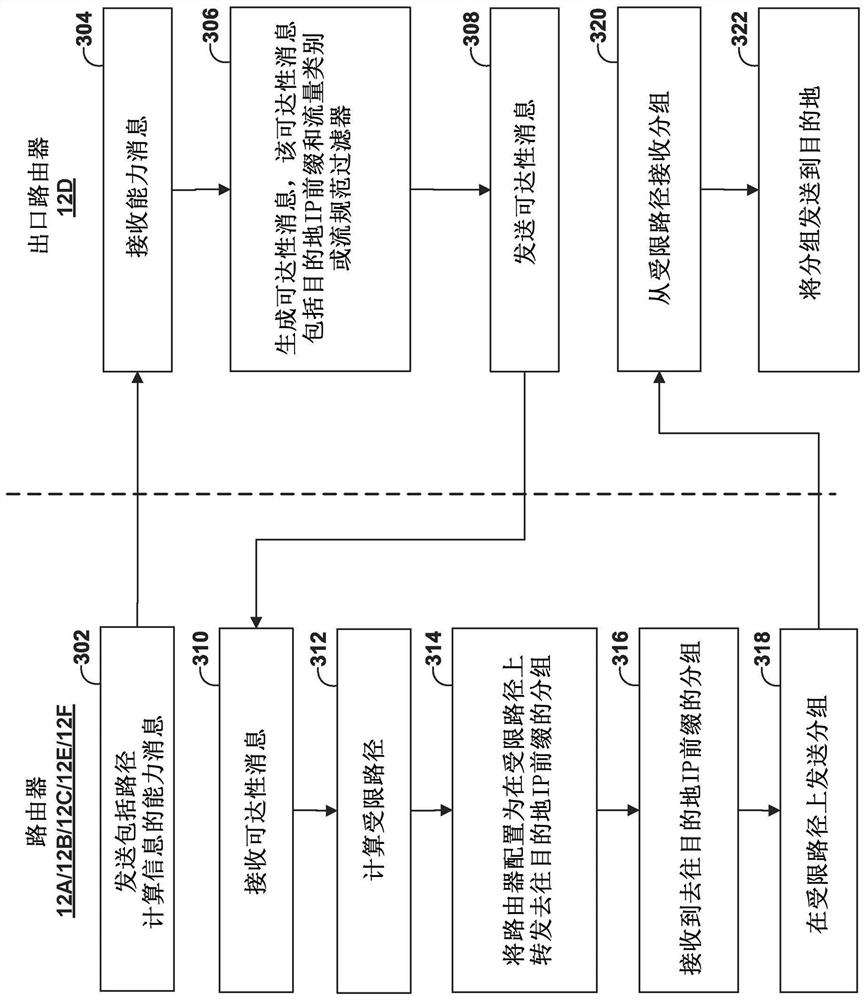Class-based traffic engineering in IP network
An IP network and category technology, applied in the field of computer networks, can solve problems such as traffic engineering hardware requirements or hardware limitations
- Summary
- Abstract
- Description
- Claims
- Application Information
AI Technical Summary
Problems solved by technology
Method used
Image
Examples
Embodiment Construction
[0019] figure 1 is a block diagram illustrating an example network system 2 in which network devices provide class-based traffic engineering in an Internet Protocol (IP) network in accordance with one or more aspects of the techniques described in this disclosure. exist figure 1 In an example, network 14 may include network devices, such as routers 12A-12F (collectively "routers 12"), to connect between one or more links (e.g., links 18A-18H (collectively "links 18") )) to establish one or more restricted paths.
[0020] In some examples, network 14 may be a service provider network. For example, network 14 may represent one or more networks owned and operated by a service provider (typically a private entity) that provide one or more services to customer networks 6A-6B (collectively "customer networks 6"). ) of customer or user consumption. In this case, network 14 is typically a Layer 3 (L3) packet-switched network that provides L3 connectivity between a public network (...
PUM
 Login to View More
Login to View More Abstract
Description
Claims
Application Information
 Login to View More
Login to View More - R&D Engineer
- R&D Manager
- IP Professional
- Industry Leading Data Capabilities
- Powerful AI technology
- Patent DNA Extraction
Browse by: Latest US Patents, China's latest patents, Technical Efficacy Thesaurus, Application Domain, Technology Topic, Popular Technical Reports.
© 2024 PatSnap. All rights reserved.Legal|Privacy policy|Modern Slavery Act Transparency Statement|Sitemap|About US| Contact US: help@patsnap.com










